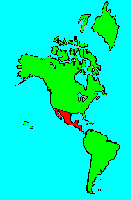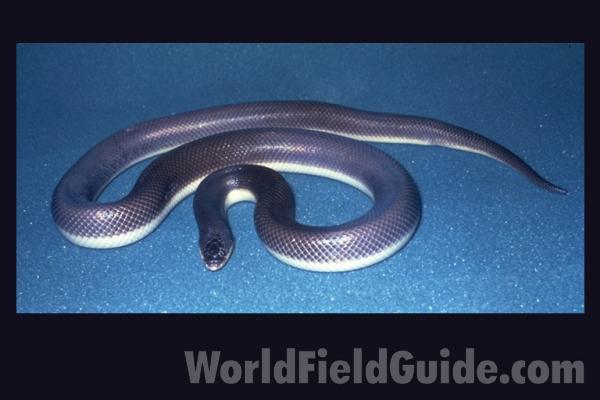SPECIES INFO
Dwarf python to sunbeam snake or Mexican burrowing snake (Loxocemis bicolor) is found along the western coast of central Mexico and south to Costa Rica and Honduras. This heavy-bodied snake is normally less than three feet long. The ability of this snake to burrow has given it another common name: Mexican Burrowing snake. The color is very dark, but it is marked with small white spots. This snake feeds on small mammals and small reptiles.Loxocemus genus contains a single species native to Central America. This species has a varied taxonomic history. It perhaps belongs with the Old World pythons or with the Asian sunbean snake family (Xenopeltidae), or perhaps in its own family, the Loxocemidae.
Xenopeltidae family contains but two species of snakes. One is found from Burma to the Philippines and the other is found in Central America.
Lizards and Snakes (Squamata Order) share many common characteristics and consequently they are grouped in a single order. There are greater differences between some groups of lizards than there are between other groups of lizards and snakes. The same is true of snakes. Lizards and snakes share a common skull shape.
There are perhaps 4,000 species of lizards and perhaps 2,700 species of snakes alive today. In the Great Big Book of Snakes and Reptiles published in 2014, they noted the above estimates.
Reptiles (Class Reptilia) are an ancient group of scaled chordates. These scales may be permanently joined, as in the turtles, or flexible, as in the snakes. Reptiles are land-based. Their eggs are laid on land and the young are air breathing.
In the Great Big Book of Snakes and Reptiles published in 2014, they noted that there are more than 7,000 species of reptiles alive today.
Backboned Animals (Phylum Chordata) are the most advanced group of animals on earth. These animals are characterized by having a spinal cord or backbone. Most members have a clearly defined brain that controls the organism through a spinal cord. Fish, amphibians, reptiles, birds, and mammals are in this phylum.
Currently, some taxonomists believe that the fish should be divided into two groups (sharks and regular fishes) and that there are some other primitive groups in the phylum such as hagfish or lampreys.
Animal Kingdom contains numerous organisms that feed on other animals or plants. Included in the animal kingdom are the lower marine invertebrates such as sponges and corals, the jointed legged animals such as insects and spiders, and the backboned animals such as fish, amphibians, reptiles, birds, and mammals.


